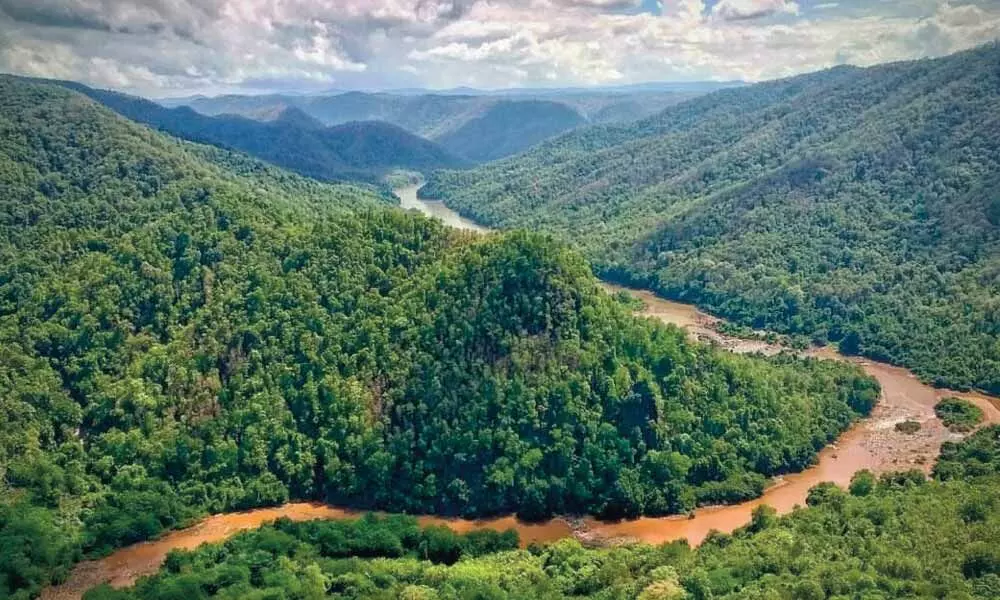1.8 lakh acres of forest land under encroachment in Karnataka

1.8 lakh acres of forest land under encroachment in Karnataka
It has come to light that 1,80,001.45 acres of the forest land across the State has been encroached
It has come to light that 1,80,001.45 acres of the forest land across the State has been encroached. The official figures from the forest department also say there were 1,05,086 cases of encroachment till December 31, 2019. The worst is in Shivamogga circle where Shivamogga, Bhadravathi, Sagar and Shimoga WL divisions where 78,496 acres of forest land is under encroachment.
"The official figure of the forest department that nearly a lakh and eighty thousand acre of forest land is under encroachment has to be taken with a pinch of salt. The IT wing of the department should work out encroachment figures using satellite imagery technology and should not depend on the compilation of district figures. The biggest forest cover loss has happened in Shivamogga district, where many minor forests and sandal reserve areas have completely vanished," said B K Singh, retired principal chief conservator of forests, Karnataka.
Singh said that politicians for their electoral gains always support encroachers and would not let the forest officers evict them.
"In fact, rival political parties compete to support them. The enactment of Forest Rights Act, 2006, which empowers district level committee headed by Deputy Commissioner to grant rights on forest land up to 4 ha to forest dwelling scheduled tribes if they are in occupation as on 13-12-2005 and other traditional forest dwellers if they have completed 75 years as on that day. This has triggered large scale encroachments even after this cut-off date. The latest Forest Survey of India report released on 31-12-2019 reveals that Karnataka has lost 1515 sq km forests in two years," he told The Hans India.
Sharing his experience, Singh remembered, "Prior to promulgation of Forest (Conservation) Act, 1980, officials of revenue department have granted forest lands for a variety of purposes and most importantly for cultivation. On the basis of saguvali chit issued by revenue department, the petitions filed by the forest department for eviction have fallen flat in judicial courts. Sometimes revenue officials deliberately would not amend their records.
"For instance, Bhadravathi tahasildar Nagraj during 2016-18 granted saguvali chit for cultivation over approximately 3000 acres forest land in Bhadrapura forests. He amended his records to show the areas as revenue land. Although disciplinary proceedings were initiated against him, tree growth has been lost and forest lands are in occupation of illegal grantees."
While a raging debate is on over the issue of encroachment in Bannerghatta National Park (BNP) the statistics also point out that 2,146.85 acres of the forest is still under encroachment.
"The 200 sq km area of BNP is a wonderful habitat for elephants and other important carnivores and herbivores. Being so close to a polluted city Bangalore, it is an important source of carbon sequestration. There are 708 cases of encroachment and 2,147 acres of the forest land in the national park have destroyed the habitat for wild animals. We have lost the source of carbon capture resulting in climate change and rise in temperature and at the same time wild animals especially elephants lost their natural habitats. The park being close to Bangalore, the land rate is costly and encroachers have blessings of land sharks," the former forest officer lamented.
Vijay Nishanth, founder of Vruksha Foundation who has been at the forefront of saving the BNP rued that in order to save the largest lung space they have requested the government not to reduce the eco-sensitve zone (ESZ) of the national park.
"This is the state of affairs across Karnataka and it is a matter of great concern. We should not lose an inch of area now," he added.
Singh said encroachments honeycomb the forests and make it fragmented and degraded. "With the growth of the human and livestock population hunger for land for housing, cultivation and pasture is on the rise. Since the revenue lands are already granted to weaker sections and landless communities and for government projects, the pressure on forest lands has increased," he said.














